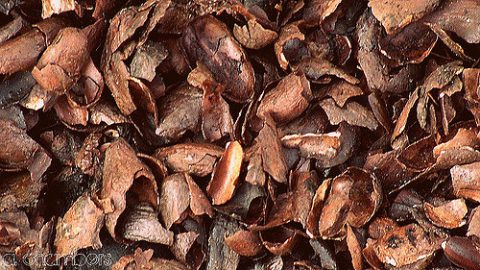Mulch adds a finishing touch to your landscaping, creating a visually appealing aesthetic while offering a multitude of benefits for your plants. From moisture retention to weed suppression, mulch plays a vital role in creating a thriving Colorado garden. Improper installation can hinder these benefits, but following some key tips can ensure optimal results for Colorado homeowners.
Knowing Your Depth: The Golden Rule of Mulch
The correct depth of mulch is crucial for maximizing its benefits while avoiding potential harm to your plants. Here’s a general guideline for different areas of your Colorado landscape:
- Around trees and shrubs: Apply a 2-3 inch layer of mulch around the base of trees and shrubs, extending

Sample mulch showcasing its importance in landscaping, a key element for Colorado homeowners seeking to enhance their outdoor spaces
outwards to the drip line (the outer edge of the tree’s canopy). Avoid piling mulch directly against the trunk, as it can trap moisture and encourage rot. Leave a few inches clear around the base of the trunk.
- Flower beds and vegetable gardens: Apply a 1-2 inch layer of mulch in these areas. This helps retain moisture, suppress weeds, and regulate soil temperature, promoting healthy plant growth.
Preparing the Soil for Optimal Performance
Before applying mulch, it’s essential to prepare the soil properly. This ensures the mulch functions effectively and doesn’t create unintended problems:
- Clear the area: Remove any existing weeds, leaves, or debris from the area you plan to mulch. This prevents them from taking root under the mulch layer and competing with your desired plants.
- Loosen the soil: Use a rake or garden fork to loosen the top few inches of soil lightly. This improves drainage and allows water and nutrients to penetrate the soil more effectively.
- Edge your garden beds (optional): Edging helps define your garden bed and prevents mulch from migrating onto walkways or driveways. Bricks, metal edging, or even natural materials like stones can be used.
With the soil prepped, it’s time for the careful application of mulch to maximize benefits and avoid potential issues. Begin at the edge of your garden bed or around the base of your tree or shrub. Spread the mulch evenly, ensuring a consistent depth throughout the designated area. While it may be tempting to add more mulch, resist the urge. Over-mulching can hinder air and water circulation, potentially suffocating your plants. Stick to the recommended depth guidelines to prevent harm. Remember that mulch decomposes over time and loses its effectiveness. To maintain its benefits and the visual appeal of your landscape, reapply mulch periodically, typically every 1-2 years.
By following these mulch installation tips and taking into account Colorado’s specific climate, you can maximize the benefits of mulch for your landscape. Keep in mind that proper mulch application contributes to healthier plants, reduced maintenance, and a visually captivating outdoor space that thrives year-round.
